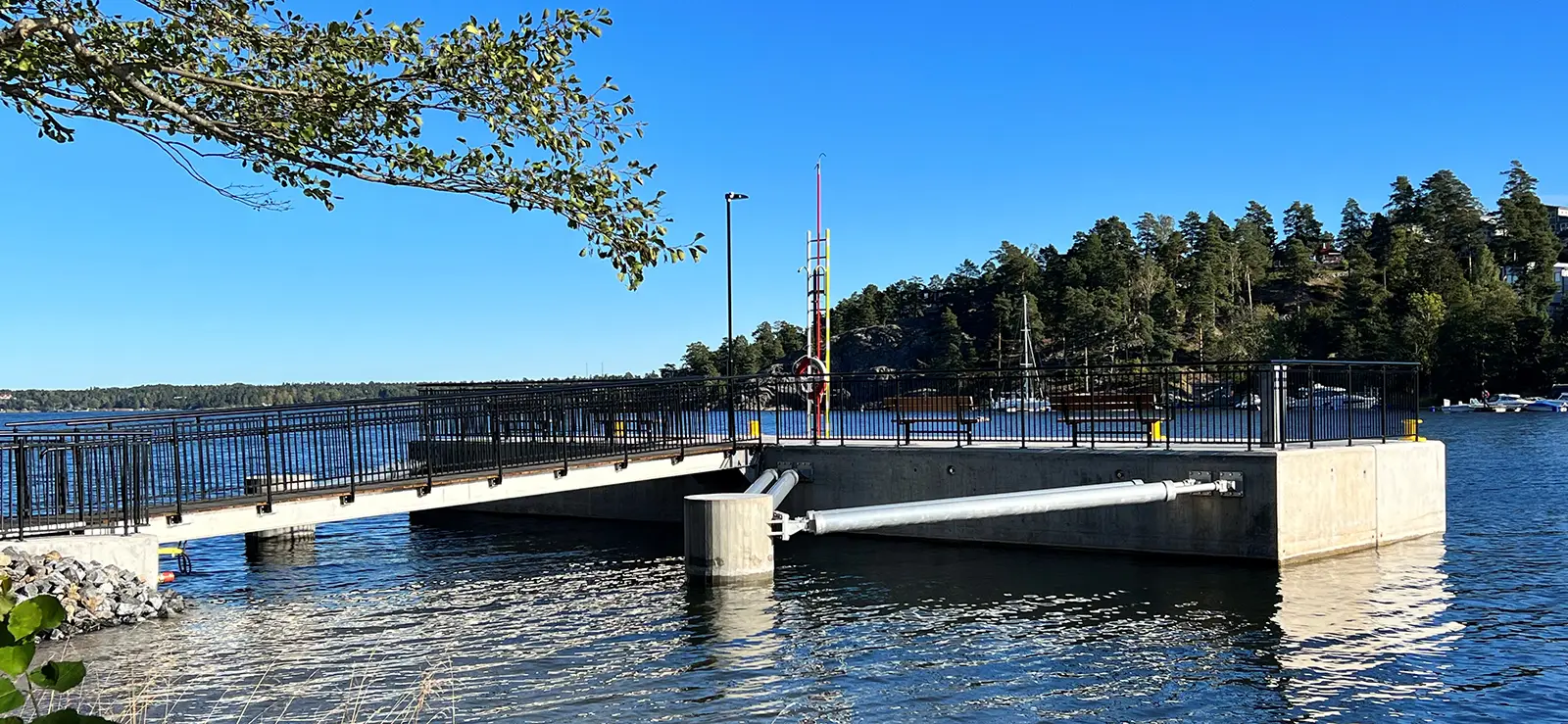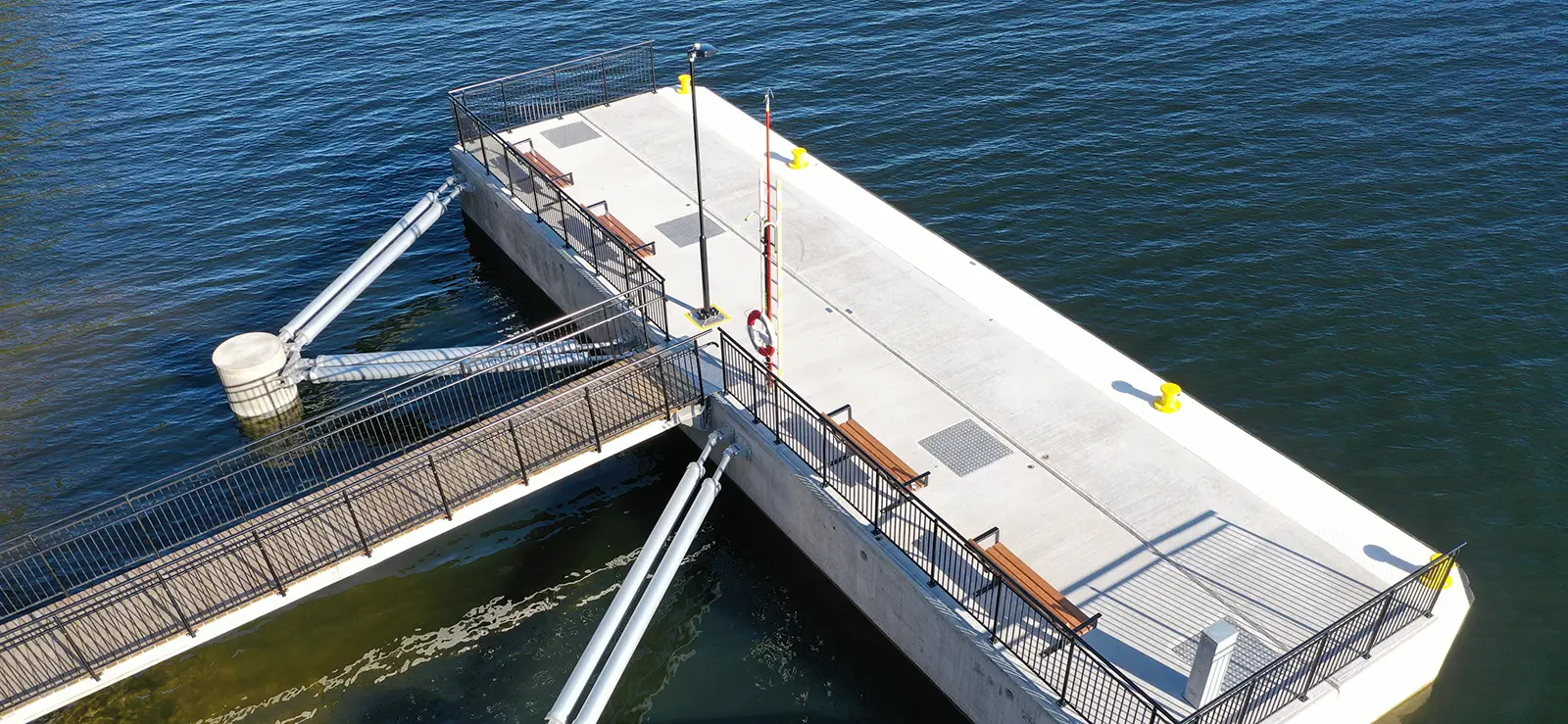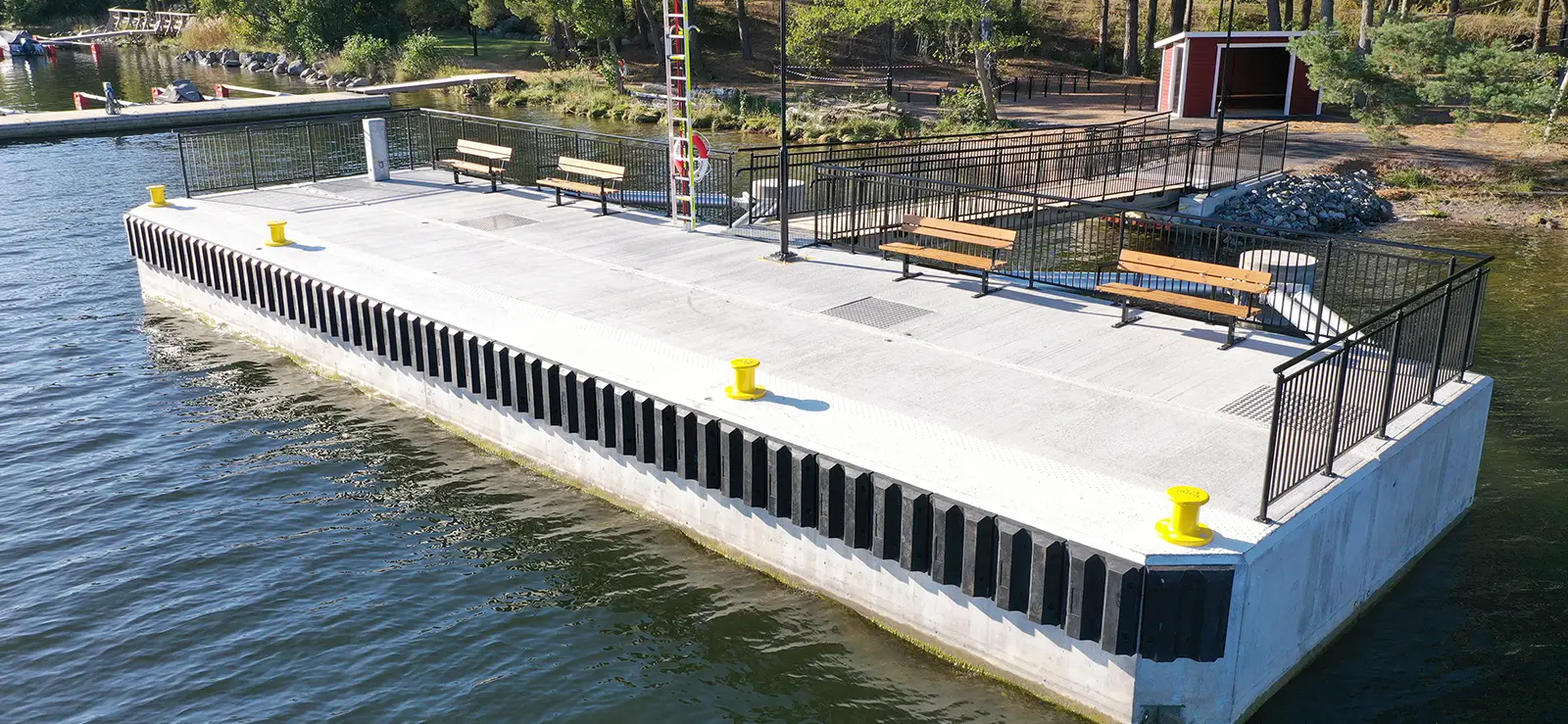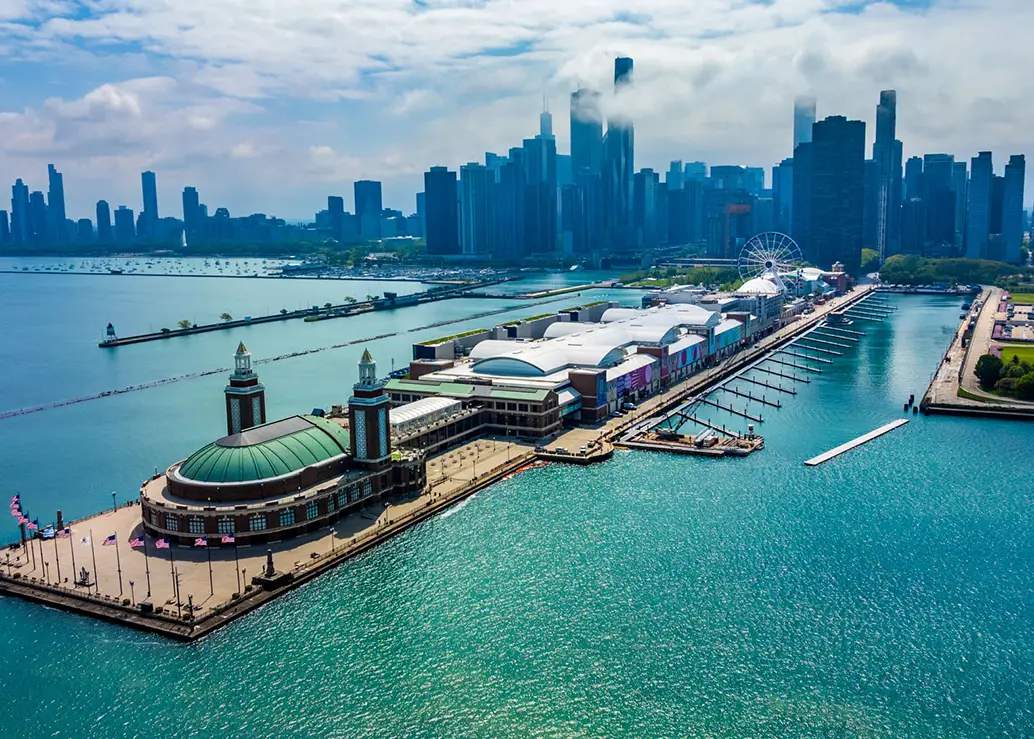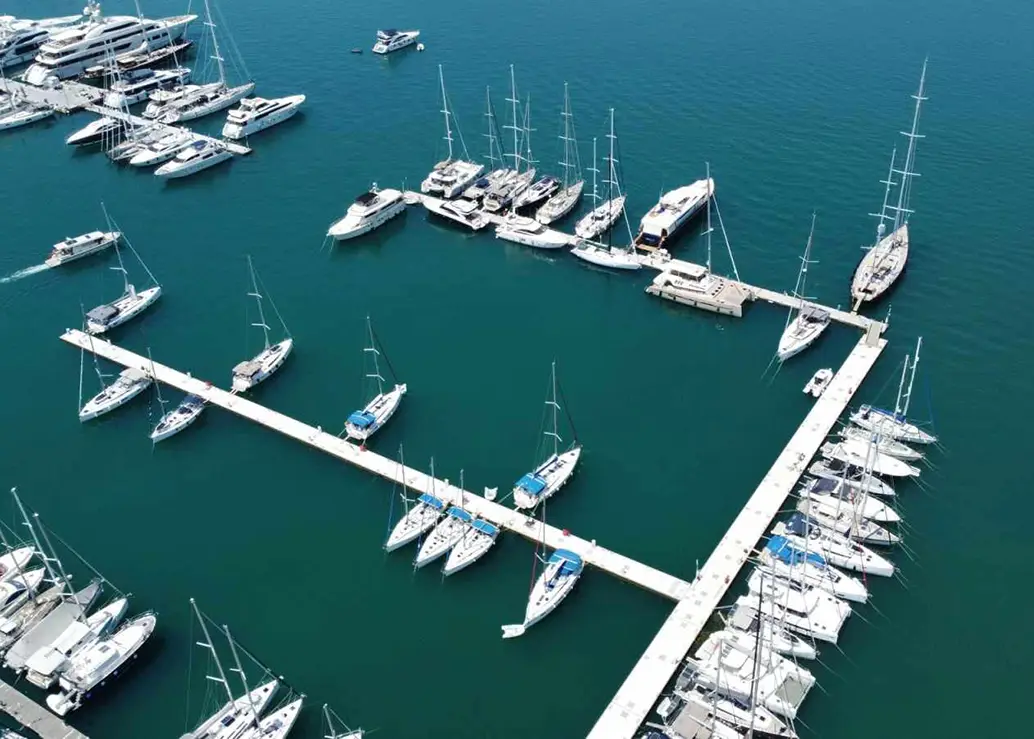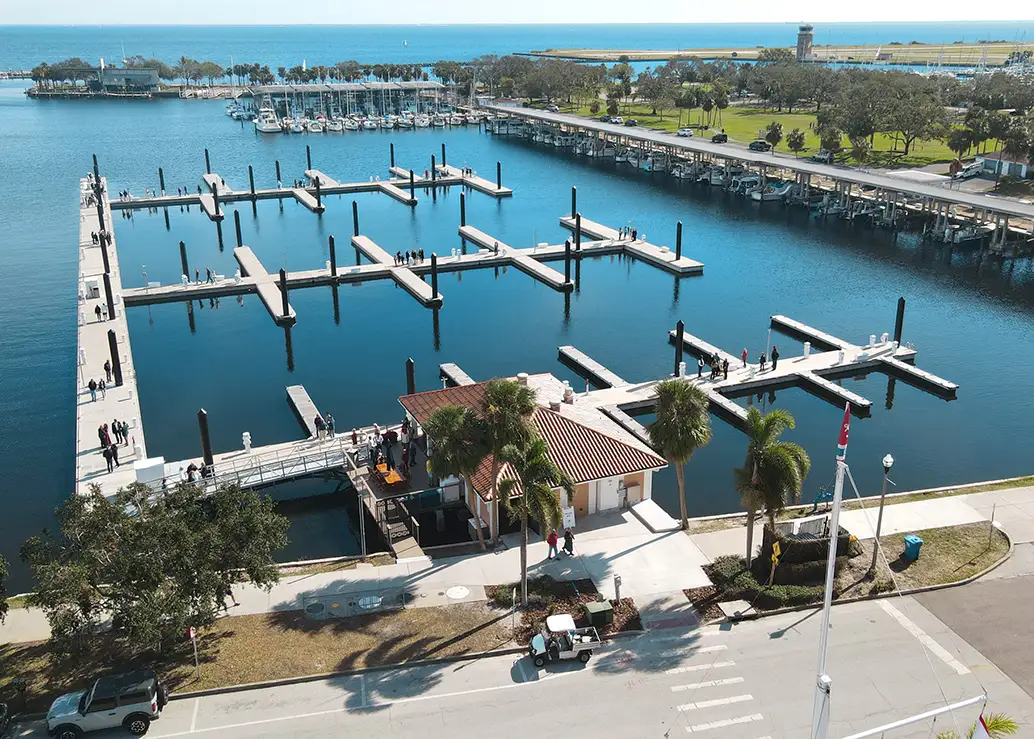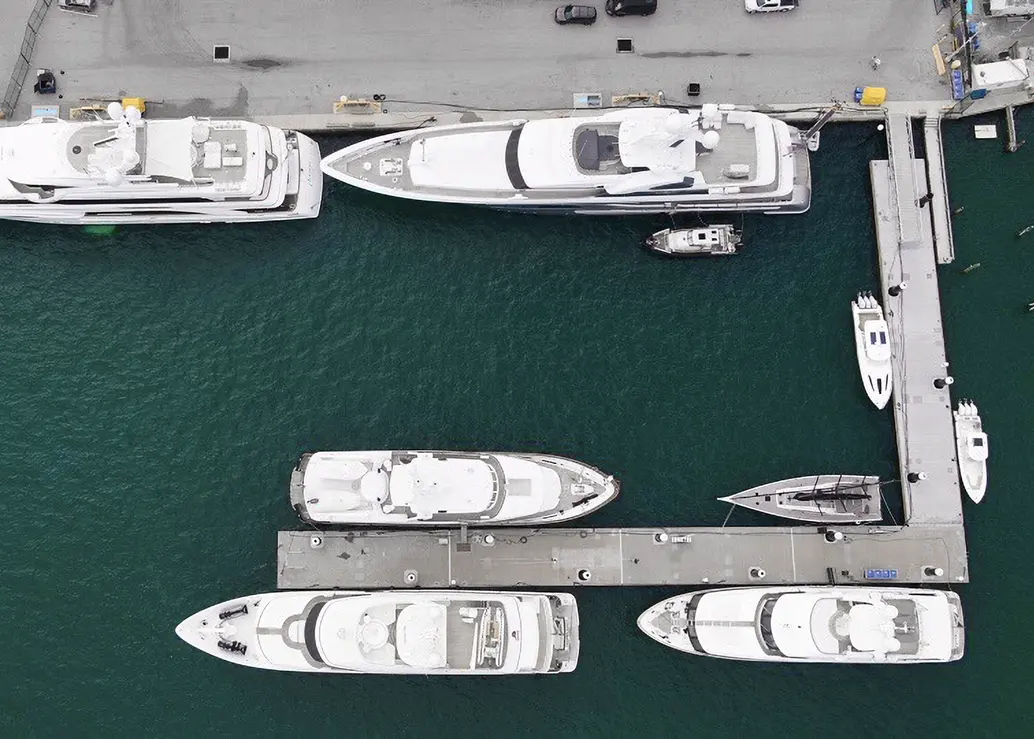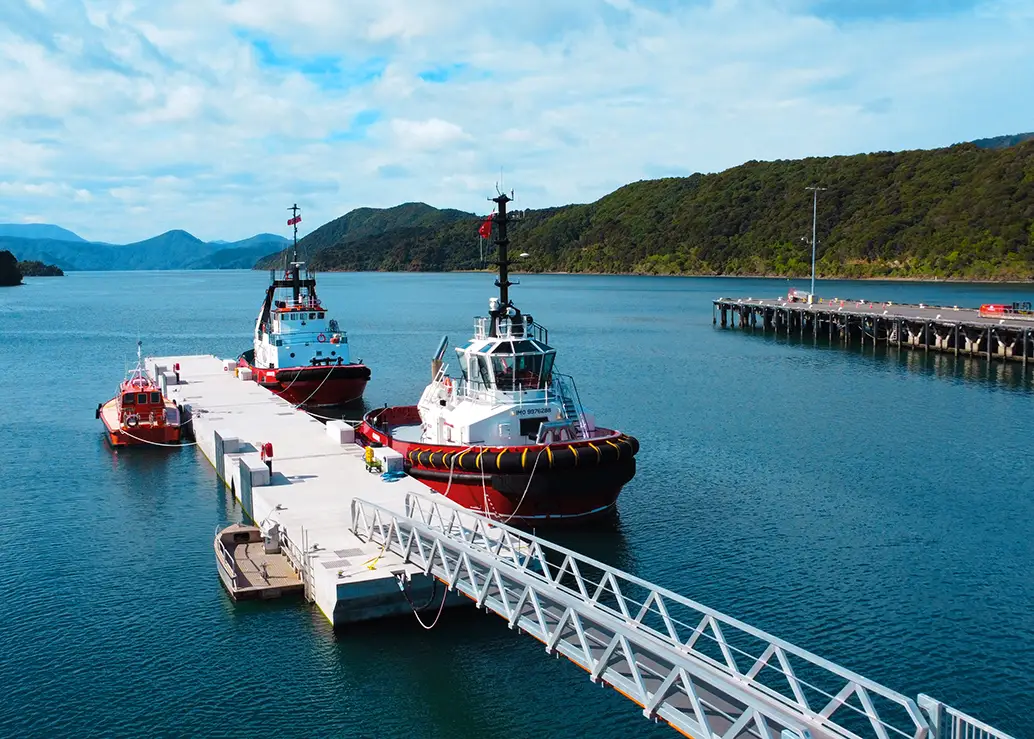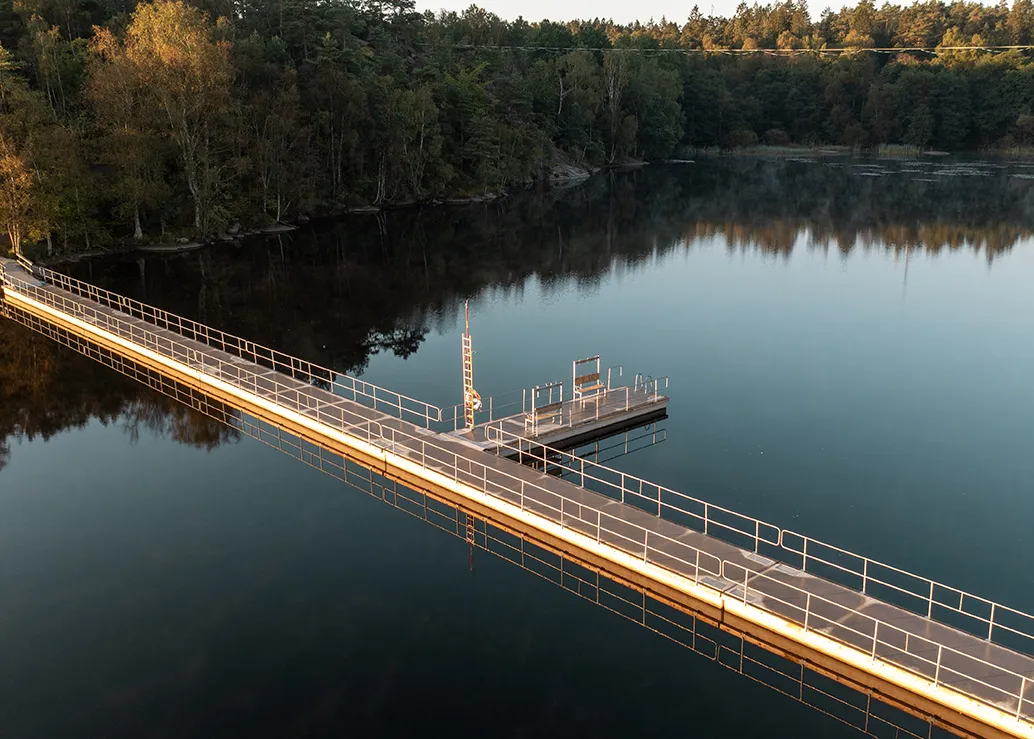RE-EMBRACING STOCKHOLM’S WATERWAYS
For many cities waterways were the first highways, before the rise of trains and cars and the building of bridges caused a steep decline in the role of ferries. But now, faced with traffic congestion and a rise in construction and maintenance costs for roadways, several cities – Stockholm included – are rediscovering the ancient virtues of travel by water. In a move to expand commuter traffic into Stockholm City by ferry, the municipality of Värmdö recently brought into operation a new ferry landing in Ålstäket, Östra Mörtnäs. Two vessels – for foot-passengers and bicycles only – will operate a route from Ålstäket, via four landings, to Grand Hôtel at Strömkajen in central Stockholm. The new, customised ferry landing at Ålstäket comprises two 20-m-long, 3-m-wide concrete pontoons that are coupled in parallel.
With a constant freeboard height of 145 cm, they provide easy access for all passengers and, through the heavy mass of their all-concrete single-cast design, they offer stability and a long working life. The floating dock is moored using eight DualDocker arms for smooth, jerk-free mechanical damping. The ferry landing connects to the shoreline via a 10 m walkway that also allows for fluctuating water levels. The pontoons were designed and built by SF Marina in Wallhamn, Sweden. As the ferry commute is on trial for two years, the pontoon dock makes sense for many reasons: it offers durability and low maintenance, poses minimal impact to marine life, and can easily be reconfigured into new layouts, or utilised elsewhere should the ferry service be discontinued. The ferry landing pontoon was installed in September 2023.

